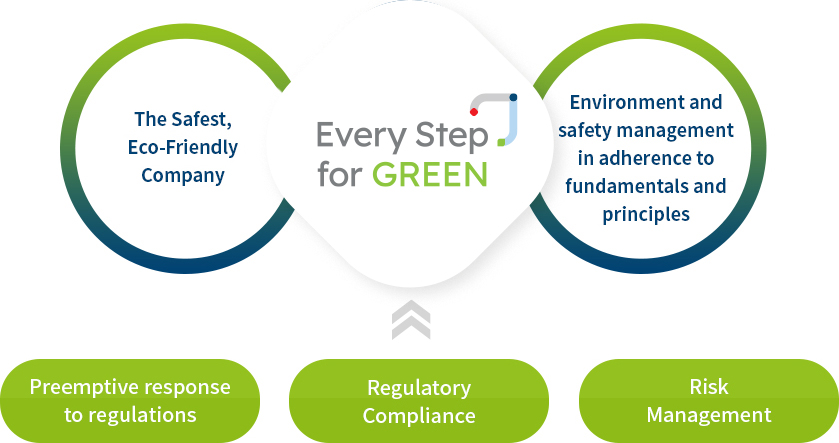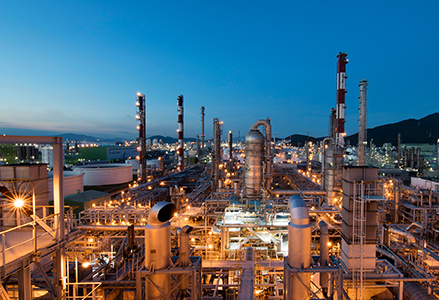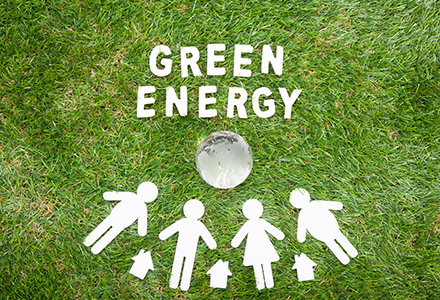Environment & Safety Management
and innovation placing utmost priority on the environment and safety.
Eco-friendly Strategy Direction and Environmental Policies

-
· Carry out preventive
measures to
minimize
environmental pollution -
· Reinforce reduction
efforts through the
environmental pollution monitoring system -
· Reduce GHG
emissions and
energy consumption -
· Improve ecofriendliness
in life-cycle of
products and services - · Waste plastic reduction (recycling) activity
LOTTE Chemical Statement on Environmental Management
We strive to pursue the sustainable development of humanity, and contribute to the enrichment of our individuals and communities.
In this regard, we set forth this “LOTTE Chemical Statement on Environmental Management” as standards of conduct, performance, and ethics all of our officers and employees must comply with in the course of business operation and management in order for LOTTE Chemical to focus on environmental values as a core element of business activities and practice environmental management.
This Statement is based on the Constitution of the Republic of Korea and other applicable Korean laws, including the Framework Act on Environmental Policy, and the Framework Act on Carbon Neutrality and Green Growth for Coping with Climate Crisis, as well as international laws, including the United Nations Framework Convention on Climate Change and the Convention on Biological Diversity.
We commit to comply with this Statement and put our commitments into actions.
- 1. We assist individuals and general public to enjoy their right to live in a healthy and pleasant environment, and are committed to environmental preservation in the course of business operation and management.
- 2. We strive to prevent environmental pollution by complying with the Constitution of the Republic of Korea, as well as domestic and international environmental laws, and committing to meet internal environmental standards which are higher than those set forth by the law.
- 3. We establish and implement an environmental management system (the process of which may include setting goals, establishing management plans, and forming relevant organizations) to manage our business in a manner to conserve and efficiently use resources and energy, to minimize greenhouse gas emissions and environmental pollution, and to fulfill social and ethical responsibilities (hereinafter referred to as “environmental management”).
- 4. We, throughout the course of business activities, strive to use environmentally friendly raw materials and improve manufacturing processes, fundamentally reduce the emission of polluting substances through conservation of resources and promotion of recycling, and minimize the harmful impact to the environment caused by the use and disposal of products.
- 5. We, with the understanding that the climate crisis affects all mankind, proactively join the government and international society’s effort in suppressing the rise of the global average temperature, and strive to transition to a net zero carbon society.
- 6 We, throughout the course of business activities and with the understanding that biodiversity is important, strive to utilize elements of biodiversity in a manner and speed that does not cause a decrease in biodiversity, and reduces negative impact on biodiversity.
- 7. We strive to promote access to information for stakeholders by periodically and transparently disclosing information on the results of our environmental management, including greenhouse gas emissions, reductions thereof, and information on sustainable development.
- 8. We strive to nurture strong partnerships with our business partners and to achieve mutual growth and development by establishing and executing measures to encourage our business partners to introduce and promote an environmental management system, including providing information on environmental management systems and results.
We pledge to do our utmost in implementing and advancing environmental management as set forth above.
All officers and employees of LOTTE Chemical
Implementation guidelines




